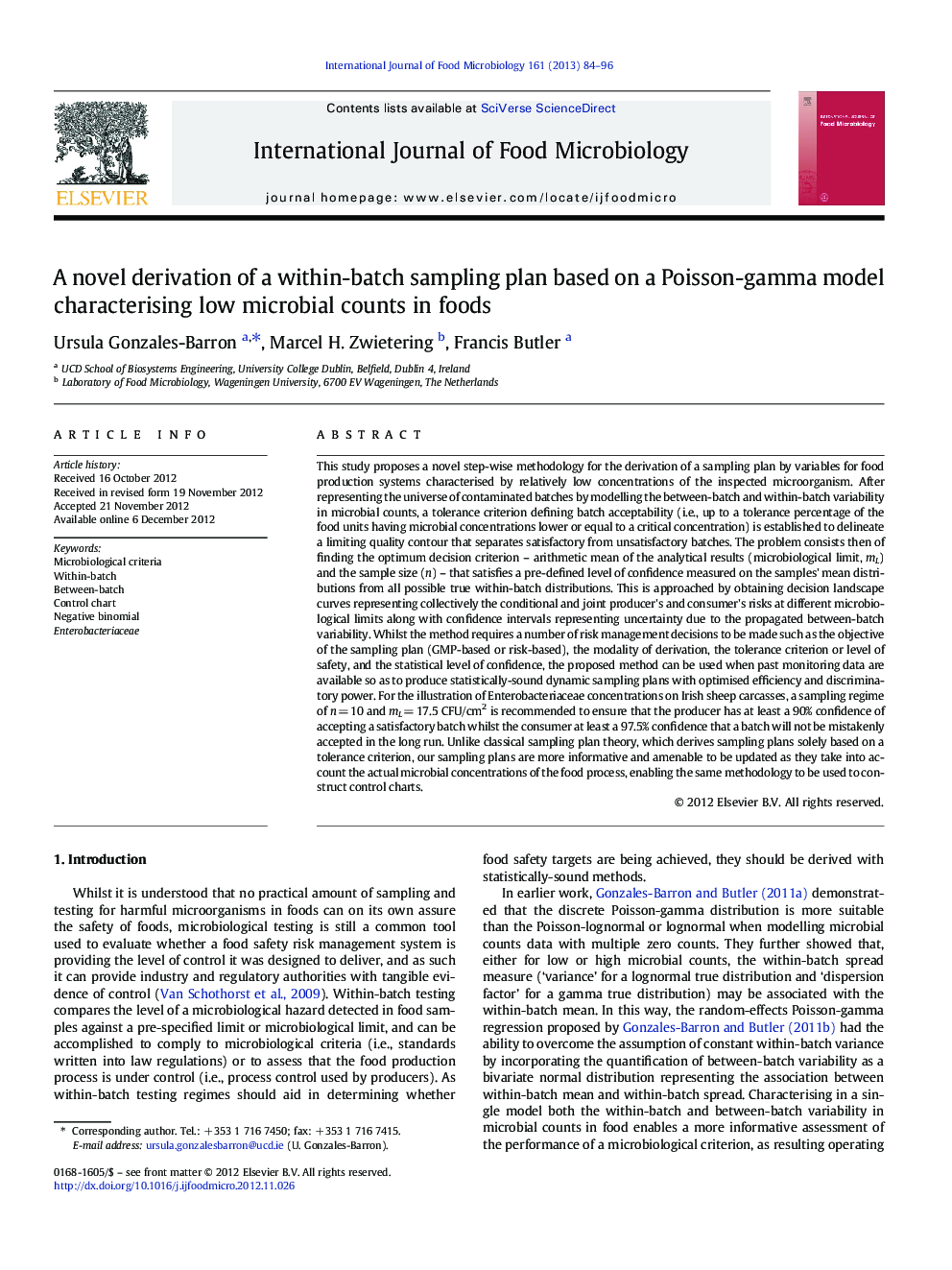| کد مقاله | کد نشریه | سال انتشار | مقاله انگلیسی | نسخه تمام متن |
|---|---|---|---|---|
| 4367221 | 1616631 | 2013 | 13 صفحه PDF | دانلود رایگان |

This study proposes a novel step-wise methodology for the derivation of a sampling plan by variables for food production systems characterised by relatively low concentrations of the inspected microorganism. After representing the universe of contaminated batches by modelling the between-batch and within-batch variability in microbial counts, a tolerance criterion defining batch acceptability (i.e., up to a tolerance percentage of the food units having microbial concentrations lower or equal to a critical concentration) is established to delineate a limiting quality contour that separates satisfactory from unsatisfactory batches. The problem consists then of finding the optimum decision criterion – arithmetic mean of the analytical results (microbiological limit, mL) and the sample size (n) – that satisfies a pre-defined level of confidence measured on the samples' mean distributions from all possible true within-batch distributions. This is approached by obtaining decision landscape curves representing collectively the conditional and joint producer's and consumer's risks at different microbiological limits along with confidence intervals representing uncertainty due to the propagated between-batch variability. Whilst the method requires a number of risk management decisions to be made such as the objective of the sampling plan (GMP-based or risk-based), the modality of derivation, the tolerance criterion or level of safety, and the statistical level of confidence, the proposed method can be used when past monitoring data are available so as to produce statistically-sound dynamic sampling plans with optimised efficiency and discriminatory power. For the illustration of Enterobacteriaceae concentrations on Irish sheep carcasses, a sampling regime of n = 10 and mL = 17.5 CFU/cm2 is recommended to ensure that the producer has at least a 90% confidence of accepting a satisfactory batch whilst the consumer at least a 97.5% confidence that a batch will not be mistakenly accepted in the long run. Unlike classical sampling plan theory, which derives sampling plans solely based on a tolerance criterion, our sampling plans are more informative and amenable to be updated as they take into account the actual microbial concentrations of the food process, enabling the same methodology to be used to construct control charts.
► A new method to derive efficient sampling plans using past microbial data is proposed.
► The first step is to model the between- and within-batch variability in microbial counts
► The second step is to define a tolerance criterion defining batch acceptability
► The third step is to derive decision landscape curves of the misclassification risks
► The optimal sampling plan is obtained after setting risk management decisions
Journal: International Journal of Food Microbiology - Volume 161, Issue 2, 1 February 2013, Pages 84–96